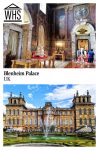Blenheim Palace
By Faith Coates
What is Blenheim Palace?
Blenheim Palace in Woodstock, Oxfordshire, is the only building in England that is considered a palace even though there is no royalty in residence. The term “palace” originates from Rome’s Palatine Hill, where the elite built their luxurious homes during the Republican period. A palace is specifically designed as a residence and must be exceptionally lavish, which definitely describes Blenheim.
Disclosure: This article contains affiliate links. Making a purchase through an affiliate link will mean a small commission for this website. This will not affect your price. Privacy policy.
Blenheim Palace belongs to the Churchill family and is now home to Lady Henrietta Spencer-Churchill. She has lived at Blenheim Palace all her life, having grown up there as the youngest child of the 11th Duke of Marlborough.
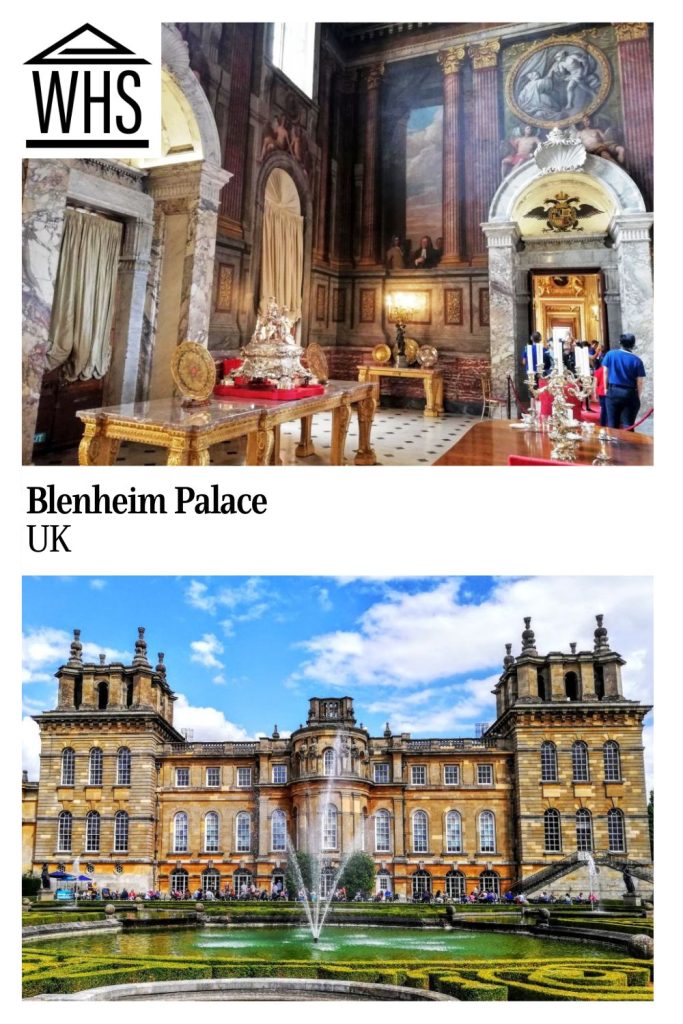
Why is Blenheim Palace a UNESCO World Heritage site?
Blenheim Palace became a UNESCO World Heritage site in 1987, recognized for its architectural grandeur, historical significance, and stunning landscapes. Blenheim is also historically important as the birthplace of Sir Winston Churchill, one of Britain’s greatest statesmen. UNESCO states that “the design and building of the Palace between 1705 and 1722 represented the beginning of a new style of architecture and its landscaped Park, designed by Lancelot ‘Capability’ Brown, is considered ‘a naturalistic Versailles.’”
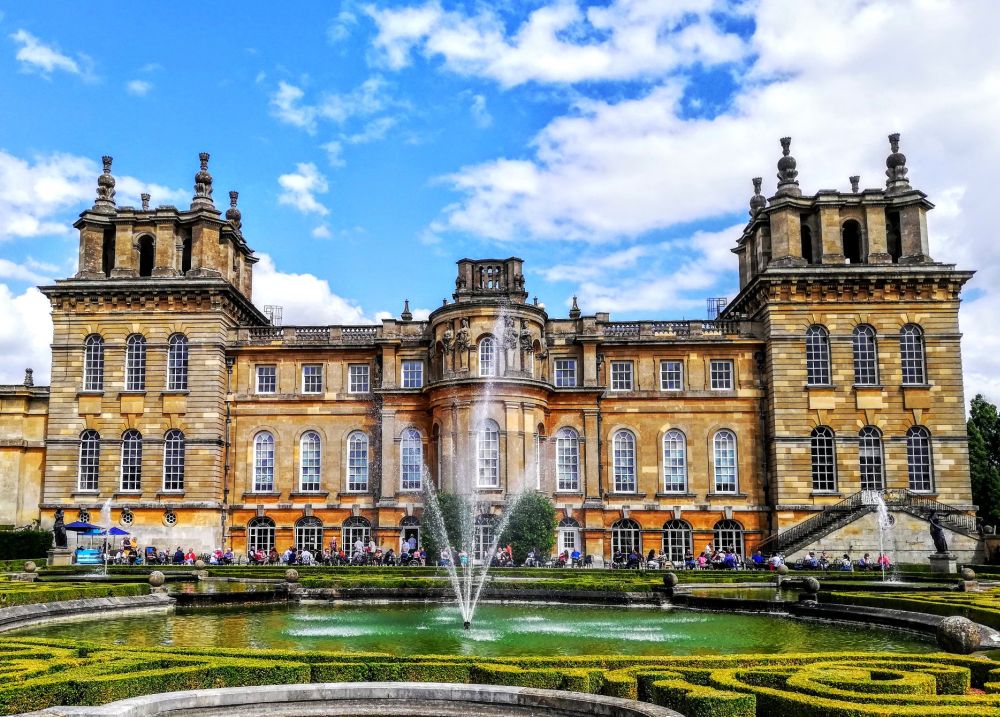
What can you expect on a visit to Blenheim Palace?
You can expect absolute stunning grandeur, jaw-dropping grounds and gardens, a maze, water terraces, lakes and woodlands. Blenheim can be overwhelming in its beauty. Its admission fee of £38 is valid for a year, so you can visit at any time and take in any of the planned events and spectacles presented at the palace.
A visit to Blenheim Palace offers a mix of history, art, and natural beauty. The palace itself contains opulent state rooms, each adorned with priceless works of art, intricate tapestries, antique furniture and even a lock of Churchill’s baby hair.
You can explore around 10 rooms in the 187-room palace and learn about the palace’s rich history through guided tours or audio guides. There is a miniature train available to take you to the gardens from the house entrance.
The lakes and High Park are designated as Sites of Special Scientific Interest (SSSI) and the ancient woodland and hedgerows are both protected. Beyond the main house, the palace grounds offer incredible gardens, a butterfly house and the Marlborough Maze.
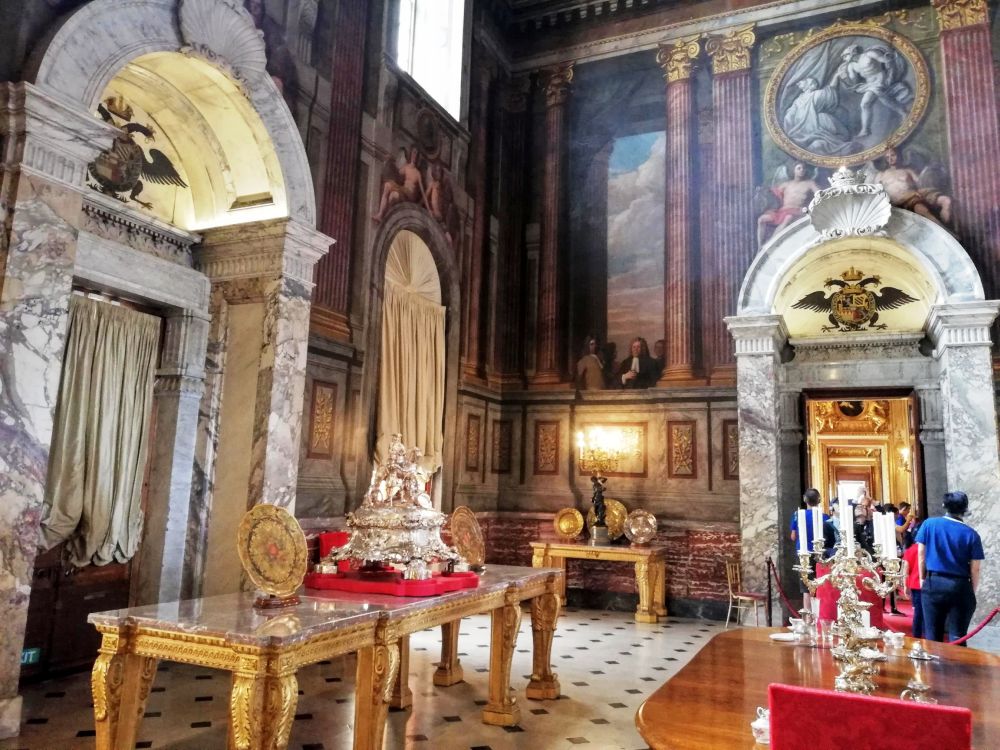
Some highlights of the palace
The public can see the State Rooms which are lavishly decorated with historic portraits and Baroque art with stunning ceilings. The Long Library is an incredible 55 metres long with over 10,000 books, the most beautiful organ and a statue of Queen Anne.
Capability Brown designed the Gardens. They include a Rose Garden, the Secret Garden and water terraces. You can sit outside at the Water Terrace Café and enjoy a cup of tea and admire the views.
Don’t forget to visit the Churchill Exhibition which celebrates his life with photographs and letters from his time at Blenheim.
Is Blenheim Palace worth visiting?
The palace is a site that is well worth visiting. Not only does it give you an insight as to how the wealthy lived (and still live even today), it is rich in history and a true architectural monument.
The stunning interiors, world-famous gardens and its historical connection to Britain’s greatest events and famous statesmen make for a powerful and educational visit.
Blenheim Palace is not just a palace, but Great Britain personified, encompassing its history, architectural grandeur and the natural beauty of the country.
What sorts of travelers would like Blenheim Palace?
The palace appeals to history buffs who are particularly interested in the life of Winston Churchill and the Duke of Marlborough’s battles. For gardeners and nature lovers the estate is a joy, with Capability Brown’s gardens and stunning walks around lakes and parklands. There is loads to do for families with children. For architecture and art lovers, the Baroque architecture and the incredible collection of art and tapestries will keep them in awe for hours.
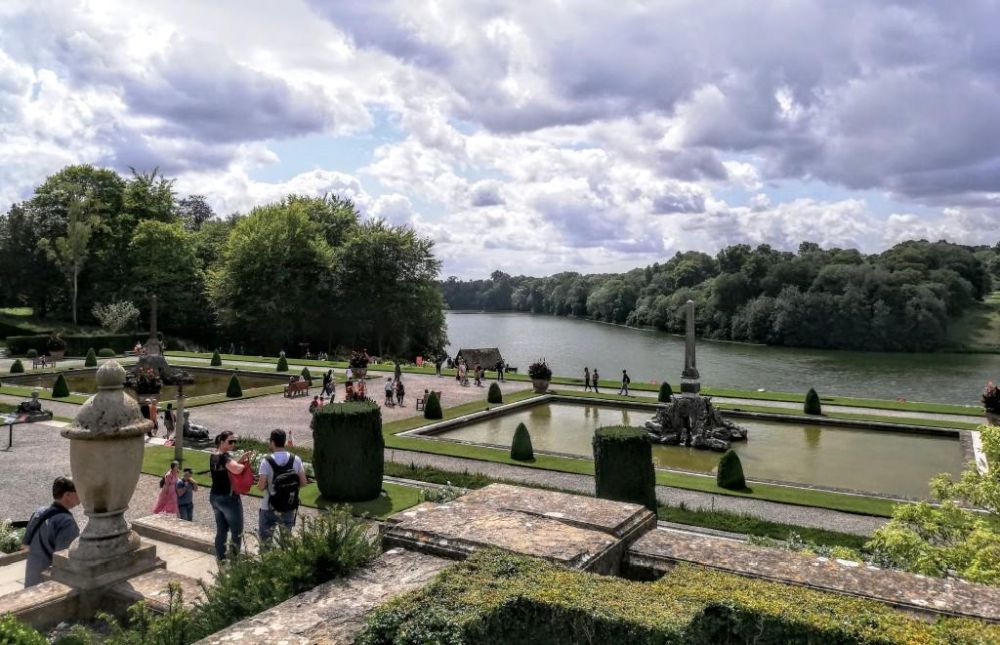
Tips for visiting Blenheim Palace
Plan ahead and check the official website for opening times, special exhibitions, and events. Booking tickets online in advance can save time.
Wear comfortable shoes. The palace and its grounds are huge, so prepare for a lot of walking.
Explore the gardens. Don’t just focus on the palace itself; the gardens and parklands are equally spectacular and worth exploring.
Take change to use the miniature railway.
The cafes are expensive and not that good. Take a picnic to enjoy outside and be kind to your budget.
Look for the Harry Potter tree by the lake in front of Blenheim Palace. The lake is featured as the Black Lake at Hogwarts in the movie “Order of the Phoenix.”
If you’re planning to do lots of sightseeing in London, by the way, it might be worth buying a London Go City Pass. It could save you quite a bit on admissions.
Where is Blenheim Palace?
Blenheim is located in the village of Woodstock, 8 miles (13 km) north of Oxford, and approximately 60 miles (97 km) northwest of London. For an easy day trip from London, you will find lots of tours and guided trips to Blenheim from most areas of the city. There are also regular bus and train services from Oxford, making it a convenient day trip from there.
If you’re driving, it takes around 2 hours from London, or if you take the train around 2.5 hours. There’s a handy shuttle bus if you arrive at Hanborough station direct to the palace on weekends. This leaves every 30 minutes and is free.
Visit London’s UNESCO sites, while you’re there: the Palace of Westminster and Westminster Abbey, the Tower of London, and Maritime Greenwich.
Book your London accommodations here.
If you drive from Oxford it takes around 25 minutes and the train is approximately 40 minutes. The parking is free and included in your ticket price.
For more information about Blenheim Palace, its opening hours and admission fees, see its official website.
Have you been to Blenheim? If so, do you have any additional information or advice about this UNESCO World Heritage site? Please add your comments below!

